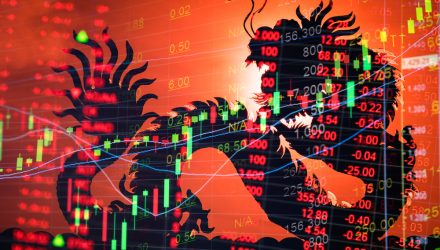While the Coronavirus pandemic has upset the global economy, China’s recovery is already showing signs of hope in growth. The near trillion-dollar rise within a few weeks has shocked many as Chinese markets have been outperforming broad emerging markets.
“Even with the ups and downs of recent weeks, China’s stock market is worth a quarter more than it was a year ago, bringing tremendous wealth to investors,” reports an article from The New York Times.
Looking at the VanEck Vectors ChinaAMC SME-ChiNext ETF (CNXT), there is a lot to consider as far as its performance, and what that could mean for different sectors. To recap, CNXT seeks to replicate as closely as possible, before fees and expenses, the price and yield performance of the SME-ChiNext 100 Index, which tracks the performance of the 100 largest and most liquid China A-share stocks listed and trading on the Small and Medium Enterprise (“SME”) Board and the ChiNext Board of the Shenzhen Stock Exchange.
As it stands right now, CNXT up 44% year-to-date (YTD), and is one of the top-performing China ETFs available to US investors. The focus on New Economy sectors and stock selection within those sectors helping to outperform against the traditional onshore China allocation on the CSI 300 Index, which is up 21%, YTD.
CSI 300 Index Is Overweight to IT, Healthcare
Looking at the CSI 300 Index, IT is overweight (30% vs 11%) and has selection boosting performance. Health Care is also overweight (19% vs 8%), with selection boosting performance, along with Financials (8% vs 30%), while Industrials is roughly the same weight at ~13%.
In regards to smaller companies, CNXT has negligible state-owned-enterprise (SOE) ownership (3%), versus the CSI 300 at 23%. That said, SOE companies owned by CNXT have outperformed the CSI’s SOE basket.
Related: China-Focused ETFs on the Radar as Trade Talks Resume with U.S.
Generally speaking, the reasons China’s stock market has been outperforming broad EM comes down to a few things. Currency moves are not a factor (the CNY is essentially flat vs the USD). US Fund inflows into China funds are basically flat, as the YTD is -$18 million. Some funds are seeing solid flows (KWEB, MCHI, ASHR, CXSE, CQQQ), while others are seeing outflows (FXI – large cap, ASHR- onshore large cap).
Investors seem to be taking a targeted approach and moving away from the “Top 50 names” strategy. This means local onshore participation (retail and institutional) will be driving prices higher.
For more market trends, visit ETF Trends.







